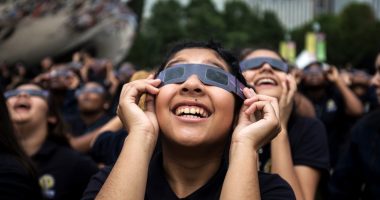The Food and Drug Administration is finally giving millions of adults with mild to moderate hearing loss what they want and need — access to hearing aids without having to get a pricey, often uncomfortable medical exam. Eliminating this requirement will enable people across the U.S. to purchase these lifesaving devices online or at their local drugstore. Dim the lights. Cue the romantic music. They might just save their marriages along the way.
Fifteen years ago, my husband and I were constantly fighting. Even the most benign discussions led to screaming matches. A conversation about what to do for dinner would invariably end with me in tears, wondering what had gone so wrong that my husband couldn’t just say, “Let’s order in Chinese food” without raising his voice. One day as we were at each other’s throats about who left the back door open, I broke down and asked him why he was always yelling at me and why couldn’t he just speak to me in a normal tone. “Because you can’t hear me,” he screamed.
Many times, I have asked friends and family to repeat themselves — in their frustration, they answer by enunciating each and every syllable slowly as if I was learning English for the first time.
“Oh,” I thought, and suddenly everything made sense.
Hearing deficits run in my family. I grew up in Cincinnati, Ohio, with a mother who had a profound hearing loss. The Jewish holidays were always loud, boisterous affairs as most of those gathered around the table were also hard of hearing, and what would pass as ear-piercing in most families was the typical decibel level of dinner conversation in our house.
So I grew up around this disability, and all the shame that is associated with it.
At age 2, my daughter was diagnosed with a moderate to severe loss — I was devastated, feeling 100% responsible. And yet even with my family history and my daughter bravely dealing with her newfound situation, I was reluctant to address my problem. I didn’t think I had one.
Or, more likely, I didn’t want to admit it.
But looking back on my life, there were plenty of signs. I remember getting tested as a young girl in grade school and getting scolded because the audiologist thought I wasn’t paying attention and purposely blowing the test. Somehow it never occurred to her that I might be hard of hearing.
Many times, I have asked friends and family to repeat themselves — in their frustration, they answer by enunciating each and every syllable slowly as if I was learning English for the first time. I have been busted faking it more times than I care to admit — pretending to be hearing something but based on my response, it was clear I hadn’t.
My husband’s words resonated, so I made an appointment to see an audiologist at The Center for Hearing and Communication (CHC) in New York City. I was nervous before the exam, though I knew exactly what to expect, having accompanied my daughter many times. What I wasn’t prepared for were the results, which explained much of my marital discord. My husband was right — I couldn’t hear. I had a moderate to severe loss in both ears.
Even though my own daughter wore them and benefitted from them, I still thought, “not for me.” The only people I knew that were aided were either much older or much younger. They were not 40-year-old urbanites.
You don’t put on a pair of hearing aids and suddenly walk off into the sunset hearing perfectly — at least I didn’t. These technological wonders often take some time to get used to. Every hearing aid amplifies sound, and many of the digital models eliminate a lot of the background noise that can make conversations so difficult. Still, your brain needs re-education to the new stimuli from your ears. Trust me, though, it’s worth it. I get up every morning, and the first thing I want to do is put my hearing aids on. So why do many of the estimated 48 million people in the U.S. who have some kind of hearing loss not get them?
Cost is definitely a factor. The hearing aids I purchased, designed for people who need the most audiological support to access full sound, were (gulp) $7,500, including the exam and follow-up visits. While the severity of my loss precludes me from benefiting from the FDA’s new guidelines, I am hopeful that the surge in demand will lower the costs of aids for everybody. For reasons I will never understand, Medicare provides no coverage. Not even a fraction. And few of the private insurance providers do either. I used a flexible spending account to pay for mine.
And then there’s the stigma of wearing them. I felt it — even though my own daughter wore them and benefitted from them, I still thought, “not for me.” The only people I knew that were aided were either much older or much younger. They were not 40-year-old urbanites.
But all of that’s about to change. Hearing aids are on the verge of having their moment.
Ideally, people will continue to be tested by an audiologist to understand their individual situations. But if only a fraction of the over 48 million people who need aids get them because of increased access and lower costs, it’s going to seem like everyone’s got something in their ears. This normalization will go a long way toward eliminating the stigma. Instead of feeling like an anomaly, I will feel, well … like everyone else.
And then there are the added benefits to treating your hearing loss. You will be addressing the one mitigable risk factor of dementia. You are also less likely to feel isolated, which often leads to depression.
Most importantly, there’s your marriage and other salient relationships in your life.
The first time I put my hearing aids on at age 45, I couldn’t believe what I had been missing. The hum of the refrigerator. The pitter-patter of rain. My husband softly asking me what I want for dinner.
Who knew there were so many romantics at the FDA?
Source: | This article originally belongs to Nbcnews.com










